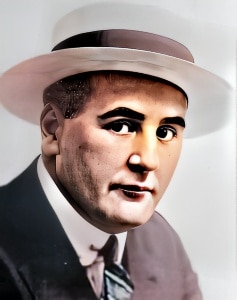 Jack Standing, a prominent figure in the early years of American cinema, left an indelible mark as both an actor and director.
Jack Standing, a prominent figure in the early years of American cinema, left an indelible mark as both an actor and director.
Born on October 16, 1886, in London, England, his career spanned the silent film era and the transition to sound films, showcasing his versatility and talent in the evolving world of Hollywood.
During the early 20th century, silent films reigned supreme, relying on visual storytelling and nonverbal acting to convey emotions and narratives. This medium demanded actors to convey feelings and stories primarily through facial expressions and physical movements, making adaptability and the ability to engage with audiences essential. Jack Standing excelled in these aspects.
One of the remarkable aspects of Jack Standing’s career was his work as both an actor and director, demonstrating his multifaceted talents in the early film industry.
As an actor, Standing appeared in a wide range of silent films, including comedies, dramas, and character-driven roles. His filmography showcased his ability to engage with a diverse array of characters and narratives, highlighting his dedication to his craft. His performances were known for their authenticity and emotional depth, making him a compelling presence on screen.
Standing’s transition to sound films marked a significant shift in the film industry, demanding new skills and techniques from actors. While many silent film actors struggled to make this transition, Standing’s adaptability allowed him to continue his career successfully.
One of his most notable works was his role as Silk Miller in “ Hell’s Hinges” (1916), a silent Western film directed by Charles Swickard and produced by Thomas H. Ince. The film revolved around a morally corrupt town, Hell’s Hinges, and a preacher’s efforts to bring moral order to it. Standing’s portrayal of Silk Miller, a saloon owner and antagonist, added depth to the film’s narrative and contributed to the emotional intensity of the story.
The film’s direction by Charles Swickard and production by Thomas H. Ince demonstrated their commitment to pushing the boundaries of storytelling in the Western genre. “ Hell’s Hinges” incorporated innovative cinematography and dynamic camera work to capture action sequences, which were groundbreaking for their time.
In the film, Jack Standing’s character, Silk Miller, represents the corrupt and immoral elements of the town, making him a central figure in the narrative’s clash between good and evil. His performance highlighted the complexities of his character, adding layers to the film’s exploration of morality and redemption.
Despite the ongoing debates about the historical and cultural impact of certain films from the silent era, Jack Standing’s contributions to early cinema remain a testament to his talent and dedication as an actor. His work in the silent film era and his successful transition to sound films underscore his versatility and commitment to his craft.
In conclusion, Jack Standing was a prominent figure in the early years of American cinema, known for his work as both an actor and director. His adaptability and versatility allowed him to excel in the transition from silent films to sound films, and his notable role as Silk Miller in “ Hell’s Hinges” showcased his ability to engage with complex characters and emotionally charged narratives. While his name may not be as widely recognized today as some of the leading actors of his time, his performances and contributions to the art of storytelling continue to be celebrated as a valuable part of the rich history of early Hollywood.
Loading live eBay listings...




